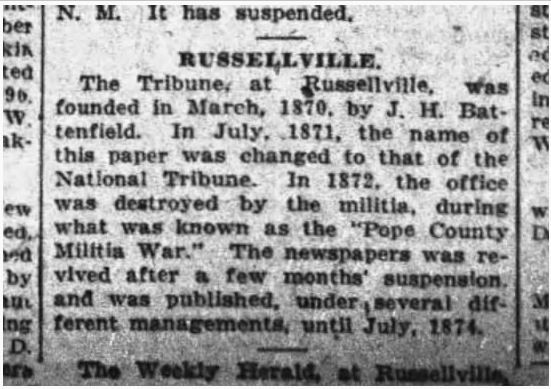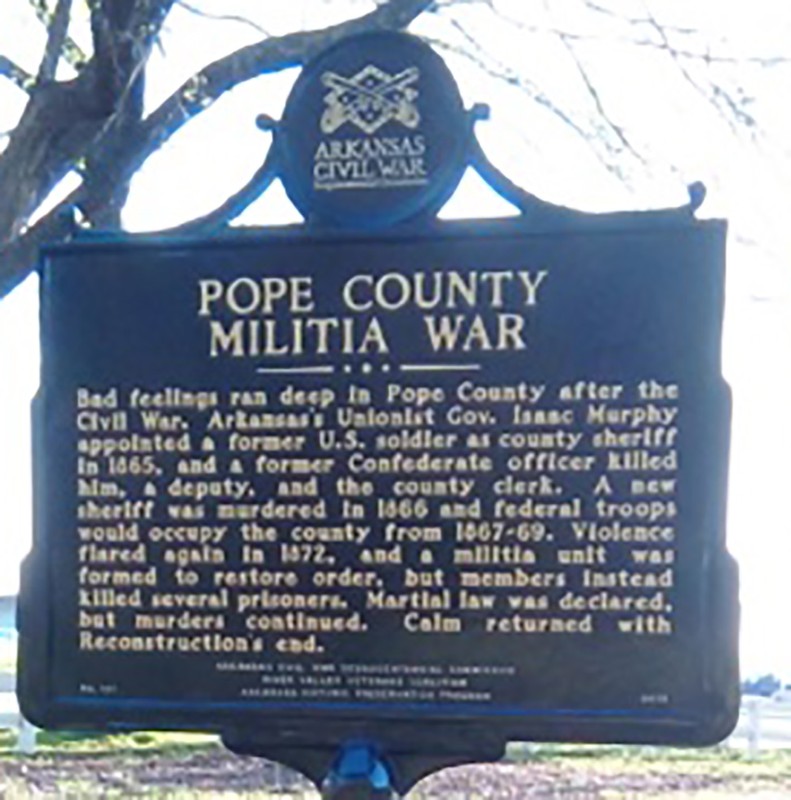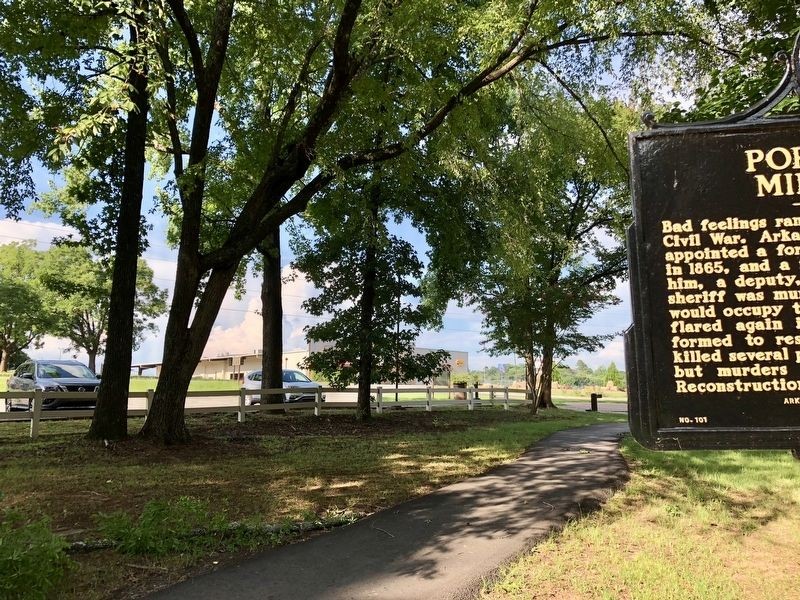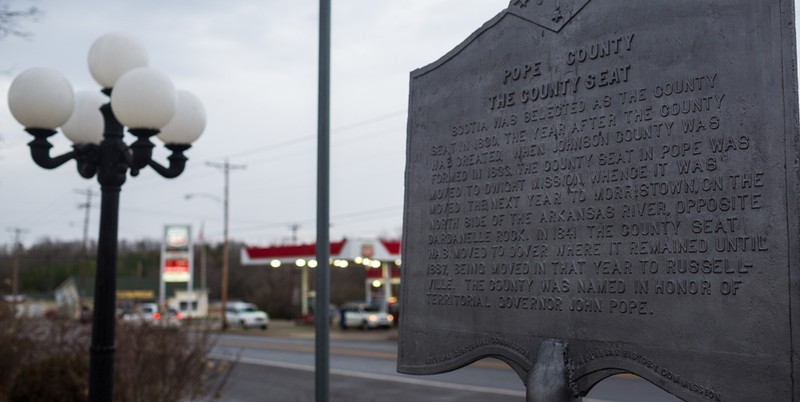The Pope County Militia War
Introduction
Text-to-speech Audio
The Pope County Militia War was an action involving several families and local elected officials during the Reconstruction years in Pope County, Arkansas. While these historic actions stand the test of memory now, this small county war stories should not be forgotten. With times of conflict and strife during reconstruction, it is no shock that federal reconstruction workers would soon send deep divides in the small rural county just to the north of the Arkansas River. While these historic locations no longer stand, we can see the Pope County Courthouse's current site, which during the time of these events would have been located in Dover.
Images
A newspaper clipping mentioning the destruction caused by the militia's, actions in Dover.

A plaque commemorating this event, at veterans park, Russellville, Arkansas.

This is a view from the marker, to the parking lot of the location.

A plaque at Dover Masonic Lodge #17, the site of the former Pope County Courthouse.

Backstory and Context
Text-to-speech Audio
In the year 1865, then Arkansas governor Isaac Murphy appoint a new sheriff to Pope County Arkansas, named Dodson Napier, who was a former federal officer in Civil War, along with his Deputy Albert M. Parks. On October 25th, 1865, both were shot in a horseback ambush, which leads to their deaths; this crime was committed by George W. Newton, a former confederate major. Their deaths sparked the controversy of sheriffs that were shot due to their connection with the union and the federal presence in Arkansas during reconstruction. Sheriffs that were shot include Morris Williams, who was shot by Matt Hale. After Williams’s death, Elisha W. Dodson and the younger brother of Williams, John H. Williams, were appointed by the governor. All of this set the bloody footwork for what was to come in the Pope County Militia War. Confederate sympathizers formed a militia and decided to act against the federal presence in the county. According to the Encyclopedia of Arkansas:
“In the spring of 1867, two federal companies under a Major Mulligan were stationed in Dover to help the civil authorities bring order to the area. The troops remained until 1869 when Governor Powell Clayton removed them. However, violence flared up again with the July 5th, 1872, assassination attempt upon Deputy Williams. In response, Dodson received permission from Orzo A. Hadley, who was serving as governor following Clayton’s 1871 resignation, to organize a company of Militia to clamp down on the violence.”
This quote highlights the importance of these men’s actions and the near-constant stream of appointments and deaths that struck this small and relatively rural county. Then, in the county seat of Dover, Arkansas, on July 8th, 1872, with a population of about 8,500 to 14,000 people during this proto war.
However, the issues came to a head when Sheriff Dodson and William A. Stewart arrested Jack Hale, William Joseph Tucker, and Isham Liberty West for their roles in several assassinations and other crimes. The Militia and their prisoners were transported into Yell County on their way to Dardanelle’s county seat when shots were fired in the darkness of night. These shots ultimately killed Rucker and William Hale; however, Nicholas Hale was bucked from his horse and hid in the path’s underbrush, and fled the crime scene. However, while the assailants were never identified, there was a search. The Hale’s posse and family maintained that they were not involved in the actions the night of July 8th.
Throughout the rest of the year, leading into 1873, pope county continued to be embedded with strife and conflict. During these years, it is thought to have been the large Democratic Party presence in the county that helped to aid in these events occurring and recurring over these years, according to Gene Boyett, author of “The Black Experience in the First Decade of Reconstruction in Pope County, Arkansas.” According to David L. Vance, former Historian for Pope County, the peace was soon restored to the county after reconstruction and federal action inside the county.
Sources
Bell, Katherine . Pope County Militia War, Central Arkansas Library Systems, Encyclopedia of Arkansas. June 30th 2016. Accessed November 26th 2020. https://encyclopediaofarkansas.net/entries/pope-county-militia-war-2277/#:~:text=The%20Pope%20County%20Militia%20War,Brooks%2DBaxter%20War%20of%201874..
Boyett, Gene W.. The Black Experience in the First Decade of Reconstruction in Pope County, Arkansas. Arkansas Historical Quarterly, vol. 51, no. Summer 1992, 105 - 119.
Schull, Laura L. Pope County Violence, 1865–1875. Pope County Historical Association Quarterly, vol.37, 2 - 27. Published June 15th 2005.
Vance, David L. Early History of Pope County. Mableville, AR. Foreman-Payne Publishers, 1970.
The Daily Arkansas Gazette, 06/09/1922
Arkansas Civil War Sesquicentennial Marker Program
By Mark Hilton, July 9, 2018
Cathy Graves, "About The River Valley."
